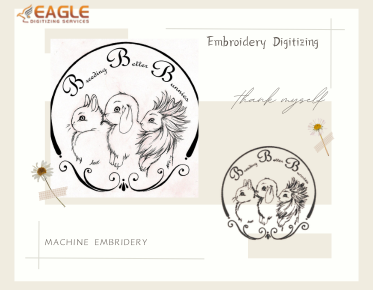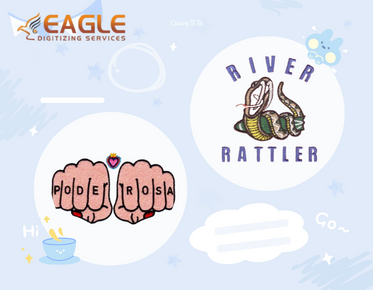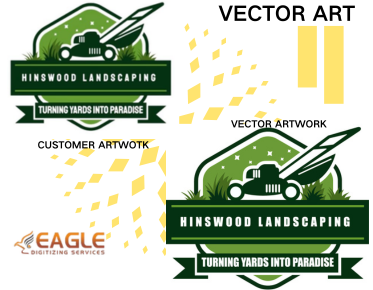What Makes a Vector File Suitable for Embroidery? 3 Key Criteria
Embroidery digitizing is a fascinating intersection of art and technology, transforming intricate designs into beautiful, stitched masterpieces. However, not every vector file is created equal when it comes to embroidery. Understanding the key criteria that make a vector file suitable for this purpose is essential for achieving high-quality embroidery outcomes. In this article, we'll delve into the three core criteria that define a suitable vector file for embroidery and how these aspects impact the final product.
High-Resolution and Scalability
The first criterion for a vector file to be suitable for embroidery is its high-resolution and scalability. Vector files, unlike raster images, are composed of paths defined by mathematical equations, which means they can be resized without any loss of quality. This feature is crucial for embroidery as the designs often need to be scaled up or down to fit different fabric sizes. The design should retain crisp, clear lines and details irrespective of the size adjustments. Vector Art Conversion services offer high-quality vector files that ensure seamless scalability, making them a preferred choice for embroidery digitizing.
Color Accuracy and Layer Separation
While precision in outlines and detail is vital, the nuances of color in embroidery designs are equally important. A suitable vector file must have clearly defined colors and layers. This is because embroidery machines often stitch colors separately, and having a vector file with incorrect or blended colors can lead to issues during digitizing and affect the final output. Companies like Eagle Digitizing emphasize color separation in their process, allowing adjustments and ensuring color accuracy, which is vital for high-quality embroidered results.
Efficient Path Design and Optimization
The third key criterion lies in the path design and optimization within the vector file. Efficient path design ensures that the embroidery machine follows a logical order while stitching, reducing thread cuts and improving production speed. Poorly designed paths can cause unnecessary complications during the embroidery process, increasing the chances of thread breaks and machine stoppages. Leveraging professional vector conversion service ensures that the vector files are not only optimized for visual appeal but also for practical stitching efficiency.
Role of Professional Digitizing Services
Professional digitizing services, such as those offered by Eagle Digitizing, bring expertise and experience into the mix. They not only convert your images into vector files but also optimize these images specifically for embroidery, considering the fabric types, thread specifications, and machine types. By focusing on vectorizing efficiently, they ensure that the final embroidered product matches the original design intentions closely.
Future Trends in Vector File and Embroidery Design
As technology advances, so too does the precision and capability of embroidery digitizing services. We are already seeing the integration of AI in predicting optimal stitching paths and color management. In the future, the continuous enhancement in vector file conversion technologies will likely bring even more sophisticated design possibilities, making the link between digital design and fabric realization seamless. As aspiring designers and businesses explore these avenues, the need for robust understanding and utilization of vector files in embroidery will only grow more critical.



